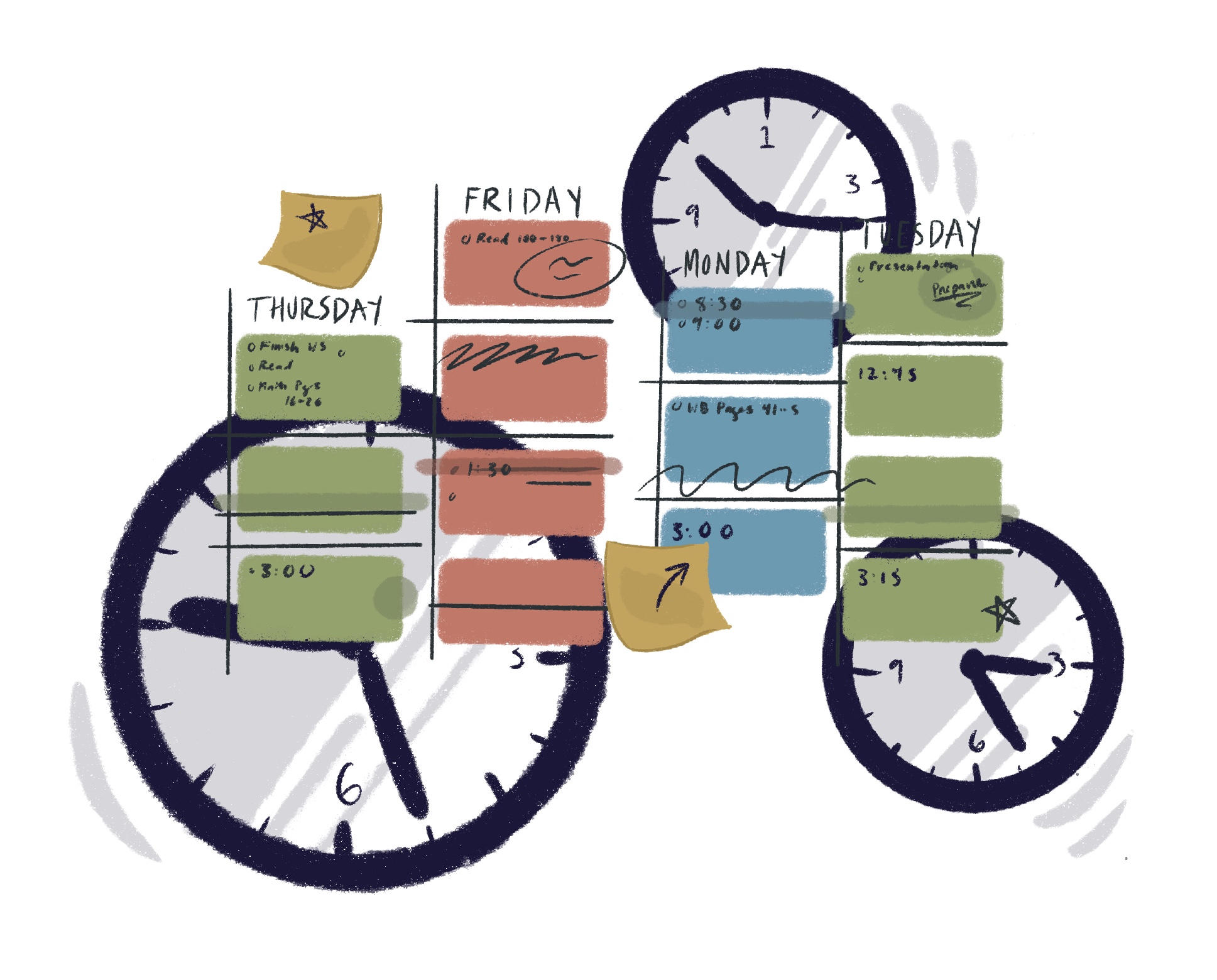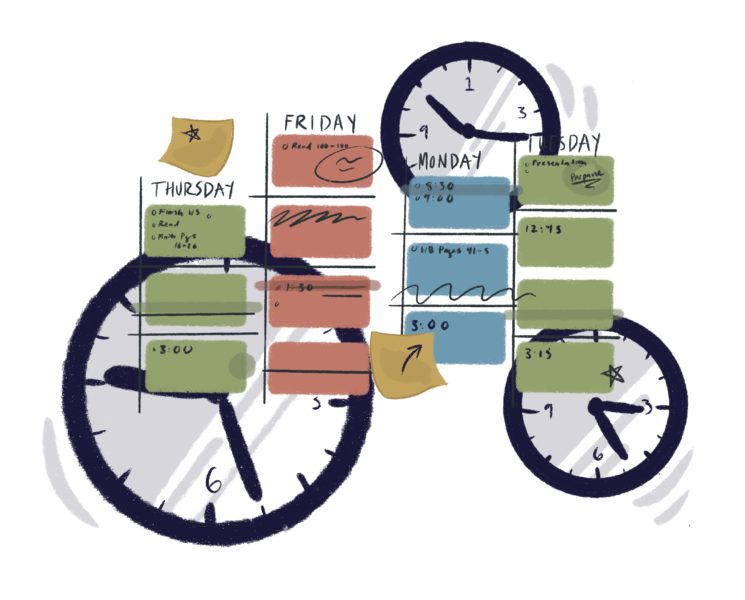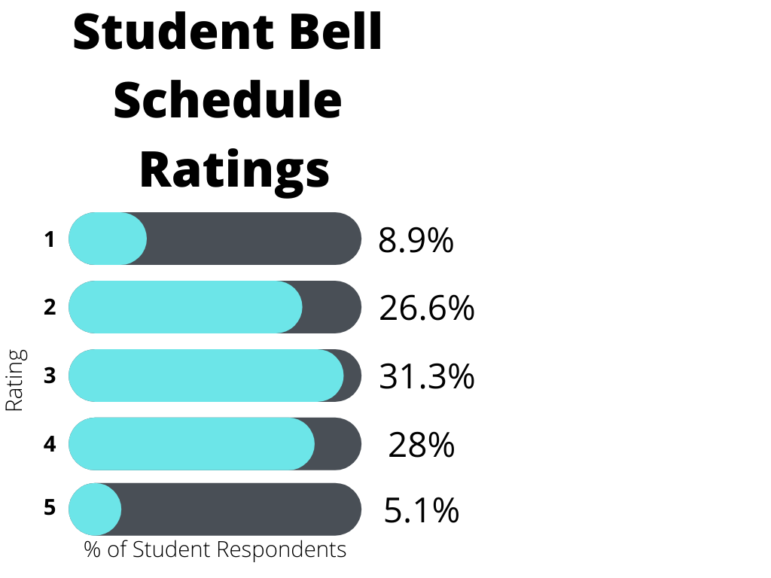

This editorial represents the unanimous opinion of all 13 Outlook editors.
The new 2021-22 fall semester schedule was designed to enable a smooth transition back to virtual learning if it becomes necessary. The San Mateo Union High School District office drafted a schedule and asked the SMUHSD school administrators for feedback but did not gather input from students, parents or teachers. The District then adjusted and finalized the schedule to be used for all schools in the SMUHSD except Hillsdale, due to its Advisory period. With an 87% district vaccination rate as of Nov. 3, 2021 and low likelihood of returning to distance learning, the editors of The Aragon Outlook believe that the current bell schedule should be adjusted to better fit the needs of students by decreasing the number of block days to two, extending Flex and encouraging breaks during block periods.
The Outlook’s bell schedule survey, responded to by 214 students, revealed that students’ opinions regarding the bell schedule were generally divided with an average rating of 2.94 on a scale of one to five, five being strongly like and one being strongly dislike, which is slightly below the neutral rating of three. Based on the same scale, 33.1% of respondents gave the current schedule a positive rating of four or five, while 35.5% of respondents gave the schedule a negative rating of one or two.
A major difference in this year’s schedule is the shorter 35-minute Flex period, which was previously 45 minutes long during virtual learning. As a result of the shortened Flex and 10-minute passing periods, students have less time to work and ask teachers for help. The 10-minute passing periods before and after Flex should be reduced to five minutes each, allocating the additional minutes to the Flex period to make it 45 minutes long like last year. The question ran in the poll presented the respondents with answer choices from one to five, one being that long passing periods are unnecessary, while five was that the periods were necessary. Even though 62.1% of students chose four or five, agreeing with the statement that these passing periods are necessary, 73.4% also chose four or five when asked whether a longer Flex period would benefit their coursework. The larger percentage shows that a longer Flex period is in higher demand among much of the Aragon student body.

The Flex period should also be moved to before lunch so that students can easily make up tests and have meetings. Tests on block days are designed to be completed in over an hour, so taking them during a 35-minute Flex period can be hard. In addition, having lunch as an extension would be beneficial for extracurricular meetings.
According to our survey data, 62.14% of students stated that the majority of their teachers do not give breaks during the 90-minute block periods. An article by informedED mentions that long block periods without designated breaks lead to a lack of productivity. Students need a break in between to remain focused. Only 3.3% of respondents strongly agreed that they are able to stay engaged the entire period, making four block periods a week an impediment to students’ focus. Each period should make room for a short five-minute break that can allow students to stretch after being sedentary for a long period of time and take a water or bathroom break without missing class time. This will help students and prepare themselves for more learning. Thus, we strongly encourage teachers to include a break between class activities so that students are more engaged during the class period.

In addition to the long block periods, teachers can only see their students three times a week, which hinders information retention. Learning is most effective when the knowledge is reinforced daily, which is especially pertinent for math and language classes. Having two block days per week rather than four would be more beneficial as students will be able to meet their teachers four times a week and become more familiar with the class material they need to know.
One of the other primary goals of the new schedule was to standardize timing across the District. However, Hillsdale’s schedule is an exception since it maintains five-minute passing periods as well as an Advisory period, which is similar to Flex. The difference between Hillsdale’s schedule and the district-wide schedule sets a precedent for variation in schedules across sites. If Hillsdale is able to use its own schedule, Aragon should be able to as well.
While changing the bell schedule in the middle of the school year may not seem intuitive, there is precedent as it has been done before. The modified schedule introduced in the fall semester of 2020 was changed before the spring semester to get rid of late start on Wednesdays. As long as the required number of instructional minutes is maintained, updating the schedule for the spring semester of 2022 should be possible for Aragon to do.
We encourage the District office to take these ideas into account going into the second semester and consider allowing individual schools to make changes to their bell schedule for the student body’s benefit. Students could then focus more and improve academically.


